Key Takeaways
- The IRS Tax Relief Programs for 2026 include options like the Fresh Start Program, Offer in Compromise (OIC), and Currently Not Collectible (CNC).
- Taxpayers may reduce tax debt by 40–60% through settlement or structured repayment plans (up to 84 months).
- You can stop or avoid IRS wage garnishment within 72 hours by entering into a relief plan.
- Trusted firms help you avoid tax relief scams and connect with the best IRS tax relief companies in 2026.
- Relief options include penalty abatement for IRS fees and interest reductions.

“Tax Relief & Abatement- IRS One Time …” from www.picnictax.com and used with no modifications.
If you’re facing overwhelming IRS tax debt in 2026, you’re not alone. Millions of Americans struggle with tax liabilities they simply cannot afford to pay in full. The good news? The IRS offers several legitimate relief programs that can significantly reduce your tax burden—if you know how to navigate them correctly. Tax Defense Partners offers expert guidance through these complex processes to help you achieve the best possible outcome.
When the IRS is demanding payment and threatening wage garnishments or bank levies, finding a reputable tax relief company becomes crucial. In 2026, several significant changes to IRS collection policies have made professional representation more valuable than ever before. With the right assistance, taxpayers are achieving settlements for 40-60% less than their original debt, stopping aggressive collection actions, and regaining their financial footing.
IRS Debt Relief: Legal Options to Solve Your Tax Problems in 2026
The IRS isn’t actually interested in bankrupting you—contrary to popular belief, they prefer workable solutions that get them at least some of what you owe. This is why they’ve established several formal tax relief programs that taxpayers can access. These options include settlements for less than you owe, manageable payment plans, temporary hardship status, and penalty reductions that can save thousands.
Understanding which program you qualify for requires thorough knowledge of IRS guidelines and financial analysis. A professional tax relief company employs licensed professionals who handle these negotiations daily and know exactly how to present your case for maximum benefit. This expertise is particularly valuable as the IRS has recently updated several programs with new qualification criteria for 2026.
How Licensed Tax Relief Companies Can Help You Settle for Less
“We stopped my wage garnishment in 72 hours and negotiated my $47,000 tax debt down to $18,500. I couldn’t have navigated the process alone.” — Michael T., Dallas, TX
Tax relief companies employ Enrolled Agents, CPAs, and tax attorneys who are legally authorized to represent you before the IRS. These professionals analyze your specific financial situation, recommend the best resolution strategy, and handle all communications with the IRS on your behalf. Most importantly, they understand exactly how to present your financial information in ways that maximize your chances of securing favorable terms.
For those looking to improve their financial standing, exploring credit repair services can also be beneficial.
With a qualified representative, you’ll no longer need to face intimidating IRS officers alone or struggle to interpret complex tax laws. Your representative will complete all necessary paperwork, ensure deadlines are met, and negotiate directly with the IRS to secure the best possible outcome. For many taxpayers, this professional approach results in settlements for 40-60% less than the original amount owed.
The most reputable firms operate on a two-phase model—an initial investigation phase to determine your options, followed by a resolution phase where they implement your chosen strategy. This approach ensures you never pay for services that won’t benefit your specific situation.
Who Qualifies for IRS Tax Relief Programs in 2026
Eligibility for tax relief depends on several factors including your income, expenses, asset equity, and compliance history. In 2026, the IRS has actually expanded many qualification criteria, making relief more accessible than in previous years. For example, the Offer in Compromise program now uses more generous expense allowances when calculating your ability to pay, resulting in lower settlement amounts for qualified applicants.
Most taxpayers with genuine financial hardship can qualify for some form of relief. Whether you’re a W-2 employee, self-employed, retired, or even a business owner with payroll tax issues, specific programs exist to address your situation. The key is having your financial information properly analyzed and presented according to current IRS guidelines—something tax relief firms specialize in.
Warning Signs You Need Professional Tax Help Now
Certain IRS actions signal that immediate professional intervention is necessary. If you’ve received a CP504 notice (Intent to Levy), Notice of Federal Tax Lien, wage garnishment notice, or bank levy, the collection process has escalated to a serious stage. These enforcement actions can severely impact your financial life and typically require professional help to resolve quickly. Other warning signs include owing more than $10,000, being several years behind on filing, or facing both federal and state tax liabilities simultaneously.
If you are also struggling with debt, consider looking into credit repair services to help improve your financial situation.
4 Legal Ways to Resolve IRS Tax Debt in 2026
The IRS offers four primary resolution strategies, each designed for specific financial situations. Understanding these options is crucial before engaging any tax relief company, as it helps you evaluate whether they’re recommending appropriate solutions for your circumstances.
Offer in Compromise: Pay Less Than You Owe
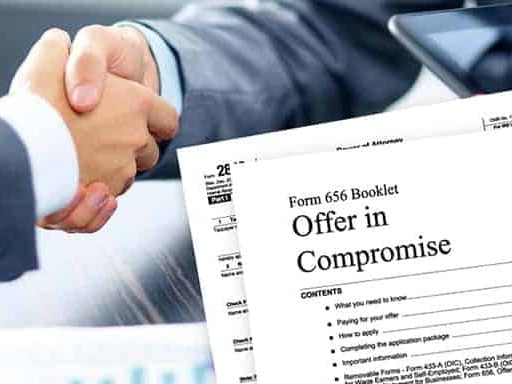
“Settling Tax Debt With an IRS Offer in …” from www.mymcmedia.org and used with no modifications.
The Offer in Compromise (OIC) program is the gold standard of tax relief, allowing qualified taxpayers to settle their debt for substantially less than the full amount. This program essentially asks the IRS to accept that they’ll never collect the full amount due to your financial situation. In 2026, the average accepted OIC settles for approximately 40-60% of the original debt—often saving taxpayers tens of thousands of dollars.
Qualifying for an OIC requires demonstrating that paying your full tax debt would create economic hardship or would be inequitable due to exceptional circumstances. The IRS evaluates your reasonable collection potential based on income, expenses, asset equity, and future earning capacity. The application process involves submitting Form 656 along with detailed financial information via Form 433-A.
For 2026, the IRS has streamlined the OIC evaluation process and now uses an online pre-qualifier tool to help determine eligibility before submitting a formal application. This helps prevent rejected applications and wasted filing fees. A significant benefit of approved OIC settlements is that they also release all tax liens associated with the settled debt.
Installment Agreement: Affordable Monthly Payments
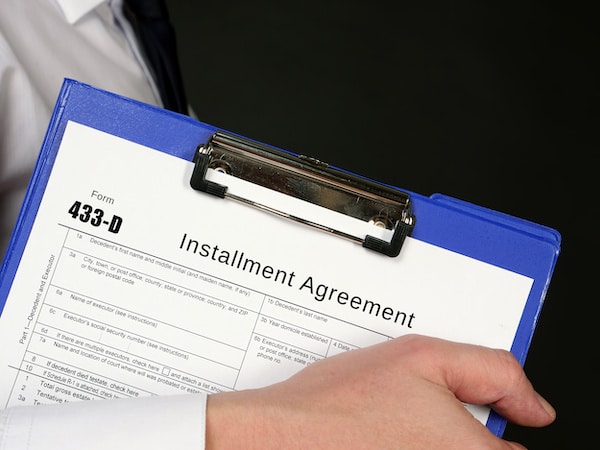
“Installment Agreement – This Is Best …” from peaceofmindtaxhelp.com and used with no modifications.
When full payment isn’t possible but you don’t qualify for an Offer in Compromise, an Installment Agreement provides a structured monthly payment plan with the IRS. These agreements allow you to repay your debt over time while avoiding aggressive collection actions. The 2026 IRS guidelines have expanded these programs significantly, with streamlined processing for debts under $50,000 and extended payment terms of up to 84 months (7 years) in certain cases.
There are several types of installment plans available depending on your debt amount and financial situation. Guaranteed Installment Agreements are available for debts under $10,000 with almost automatic approval. Streamlined Installment Agreements cover debts up to $50,000 without requiring detailed financial statements. For larger debts, Partial Payment Installment Agreements allow for payments based strictly on your ability to pay—potentially saving substantial amounts over the life of the agreement.
While penalties and interest continue to accrue during repayment, the rates are significantly lower than what you’d face with unresolved debt. Additionally, these agreements prevent liens, levies, and garnishments as long as you maintain your payments—providing immediate relief from collection pressure.
Currently Not Collectible Status: Pause All Collections

“IRS Currently Not Collectible status …” from pinkharbor.com and used with no modifications.
For taxpayers experiencing severe financial hardship, Currently Not Collectible (CNC) status offers temporary but complete relief from IRS collection efforts. This designation essentially tells the IRS that attempting to collect from you would leave you unable to afford basic living expenses. When placed in CNC status, all garnishments, levies, and collection attempts immediately cease.
Qualifying for CNC status requires proving that your income barely covers or falls below the IRS Collection Financial Standards for necessary living expenses. The 2026 standards have been adjusted for inflation, making qualification somewhat easier than in previous years. While interest and penalties continue to accrue during this period, the immediate relief from collection actions provides breathing room to improve your financial situation.
Penalty Abatement: Remove Expensive Late Fees
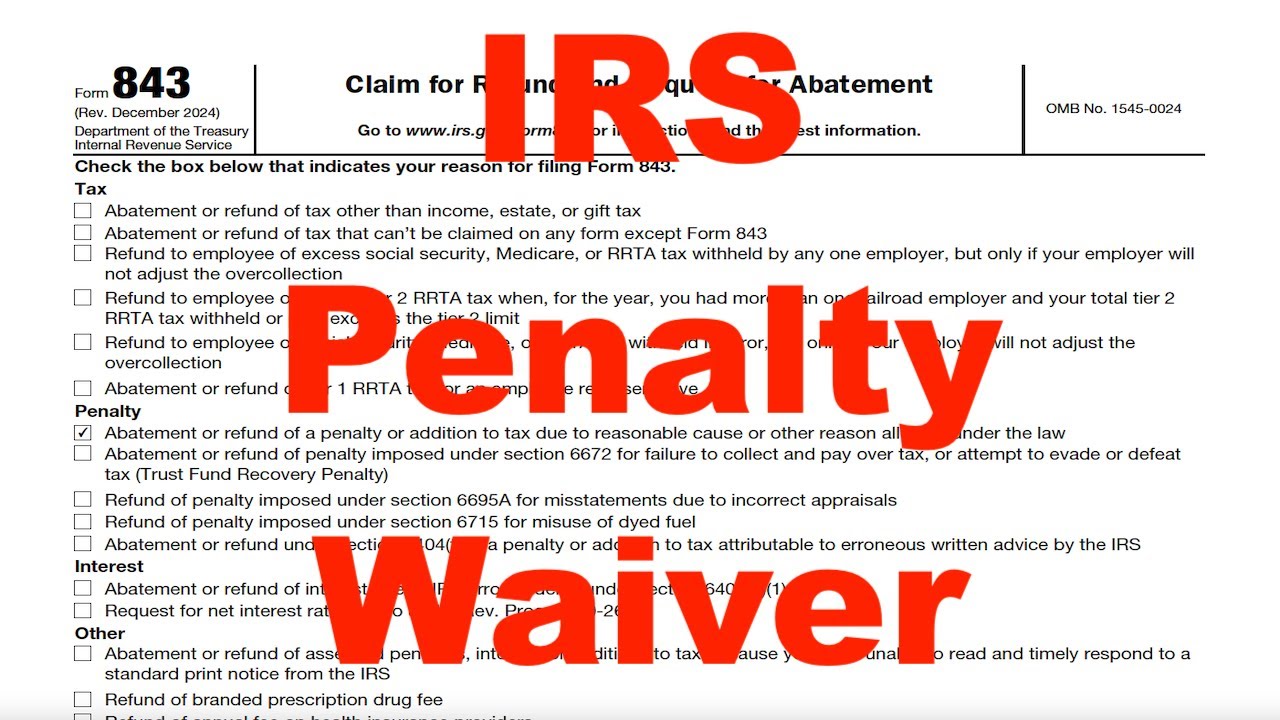
“Time Penalty Abatement (Waiver …” from www.youtube.com and used with no modifications.
Many taxpayers don’t realize that penalties often comprise 25% or more of their total tax debt. Penalty abatement allows for the removal of these additional charges based on reasonable cause or administrative waivers. The First-Time Penalty Abatement program, in particular, provides automatic relief for taxpayers who have been compliant for the previous three years before the penalty was assessed.
Beyond first-time abatement, penalties can be removed if you can demonstrate reasonable cause such as serious illness, natural disasters, unavoidable absence, or inability to obtain necessary records. In 2026, the IRS has expanded its reasonable cause criteria to include certain pandemic-related hardships and economic factors. A successful penalty abatement can instantly reduce your tax debt by thousands of dollars with relatively minimal effort.
Top 5 IRS Tax Relief Companies in 2026 (Compared & Verified)
Selecting the right tax relief company is crucial for achieving optimal results. We’ve thoroughly evaluated dozens of providers based on their IRS authorization status, BBB ratings, fee transparency, state licensing, and client outcomes. These five companies consistently deliver exceptional results while maintaining ethical business practices.
For more insights, check out our review of top debt settlement companies.
Optima Tax Relief: Best Overall for Complex Cases
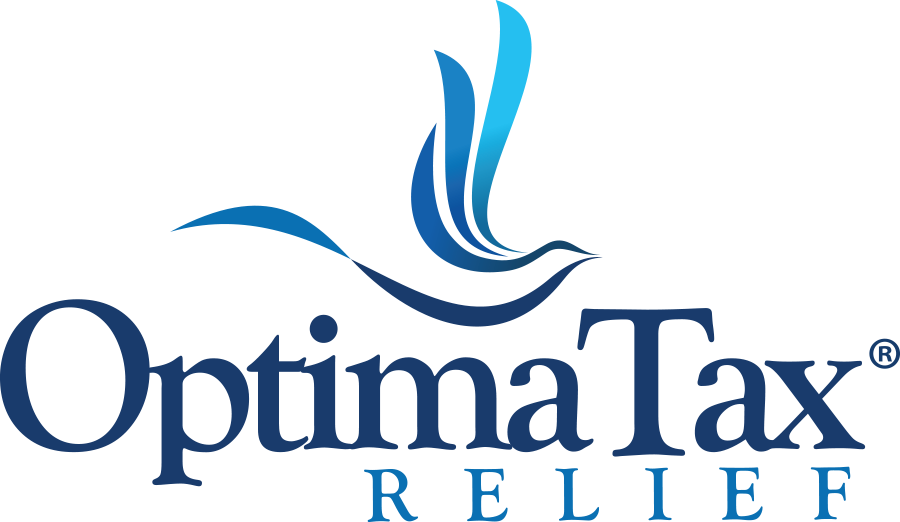
“Trust the Experts at Optima Tax Relief” from optimataxrelief.com and used with no modifications.
Optima Tax Relief stands out as the industry leader for complex tax situations, particularly for taxpayers facing aggressive collection actions or owing more than $15,000. Their two-phase approach begins with an investigation period (typically $495) followed by a resolution phase only if viable solutions exist. Their team includes numerous Enrolled Agents and tax attorneys with decades of combined experience in negotiating with the IRS.
What sets Optima apart is their exceptional success rate with Offer in Compromise cases—their settlements consistently achieve 40-60% reductions from original debt amounts. They operate nationwide and maintain an A+ BBB rating with accreditation. Their transparent fee structure ($2,500-$7,500 depending on complexity) only charges after they’ve determined viable resolution options. For taxpayers facing wage garnishments or bank levies, Optima typically achieves emergency stops within 3-5 business days.
Tax Defense Network: Emergency Garnishment Stops
“Tax Defense Network | Tax Relief Company” from www.taxdefensenetwork.com and used with no modifications.
Tax Defense Network specializes in emergency tax situations requiring immediate intervention. Their team excels at stopping wage garnishments, bank levies, and other aggressive collection actions within 24-72 hours. With contingency-based pricing (typically 15-25% of savings achieved), they align their compensation directly with client outcomes, creating powerful incentives to maximize your savings.
Community Tax: Transparent DIY/Full-Service Hybrid

“Community Tax (Top Rated?) – 120+ …” from www.solvable.com and used with no modifications.
Community Tax offers a unique approach combining professional representation with do-it-yourself tools. Their client portal provides unprecedented transparency into case progress, document requirements, and resolution options. This hybrid model allows clients to remain actively involved while still benefiting from professional guidance and representation.
What many clients appreciate about Community Tax is their willingness to publish actual settlement letters (with personal information redacted) to demonstrate real results. Their fee structure ($2,000-$6,000) is results-based, with payments typically made after specific milestones are achieved. With CPAs and Enrolled Agents on staff, they provide service across all 50 states and have maintained an A+ BBB rating since 2009.
For more information on similar services, you can explore top debt settlement companies near you.
Larson Tax Relief: West Coast Specialist

“Home – Larson Tax Relief” from larsontaxrelief.com and used with no modifications.
For taxpayers in California, Washington, Oregon, and other western states, Larson Tax Relief provides specialized expertise in both federal and state tax issues. Their team has particular experience dealing with California’s notoriously complex Franchise Tax Board (FTB) alongside IRS matters—a valuable combination for West Coast residents facing multi-agency tax problems.
Instant Tax Solutions: Affordable Help for Smaller Debts
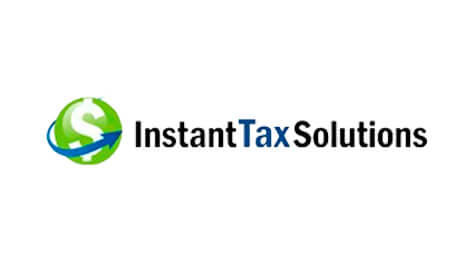
“IRS Tax Relief Lawyer Services | Call …” from instanttaxsolutions.com and used with no modifications.
Taxpayers with more modest tax debts (under $15,000) often find Instant Tax Solutions offers the most affordable professional assistance. With starting fees as low as $995, they provide accessible help for those seeking Currently Not Collectible status, penalty abatement, or simple installment agreements. Their streamlined process is particularly well-suited for straightforward cases that don’t require complex negotiation strategies.
For those interested in exploring financial options, you might also consider the best credit repair services near you.
While their services are available in over 30 states, they maintain a more focused approach than larger national firms. This specialization allows them to offer more competitive pricing for simpler tax resolution cases while still employing IRS-authorized representatives and maintaining strong BBB ratings.
How to Verify if a Tax Relief Company is Legitimate
The tax relief industry unfortunately attracts some unscrupulous operators alongside legitimate professionals. Before engaging any company, performing proper due diligence is essential to avoid potential scams. Legitimate firms welcome this verification process and make their credentials readily available.
At minimum, you should verify three critical aspects of any tax relief company: their IRS authorization status, business reputation, and state licensing. Companies that hesitate to provide this information or pressure you to sign contracts before verification are sending clear warning signals about their legitimacy.
Remember that legitimate tax relief firms operate on a contingent or phase-based fee model. They should never demand large upfront payments before investigating your case and determining viable solutions. If a company promises specific outcomes like “guaranteed 90% reduction” before reviewing your financial details, that’s another major red flag.
Check Their IRS Authorization Status
The most reliable way to verify a tax relief company is through the IRS Directory of Federal Tax Return Preparers. This official database lists all individuals authorized to represent taxpayers before the IRS. Any legitimate tax relief firm should employ multiple professionals with valid credentials like Enrolled Agent (EA), Certified Public Accountant (CPA), or Tax Attorney status. These credentials can be verified directly on the IRS website by searching the professional’s name.
An authorized representative will need to file Form 2848 (Power of Attorney) to legally represent you before the IRS. Be wary of any company that hesitates to complete this form or suggests alternative representation arrangements. Without proper authorization, a company cannot legally negotiate with the IRS on your behalf—rendering their services essentially useless.
Verify BBB Ratings and Accreditation
The Better Business Bureau provides valuable insights into a company’s track record of customer satisfaction and complaint resolution. Look for firms with A+ or A ratings and official BBB accreditation. This accreditation indicates the company has committed to resolving consumer complaints and maintaining ethical business practices. Check not just the rating but also read specific customer reviews and complaint responses to gauge how the company handles client concerns.
Beyond BBB, examine independent review platforms like Google, Trustpilot, and Consumer Affairs for consistent feedback patterns. Legitimate companies typically have hundreds of verified reviews across multiple platforms. Be suspicious of companies with only a handful of reviews or those with exclusively perfect ratings, as this may indicate review manipulation.
Confirm State Licensing and Credentials
Depending on the services provided, tax relief companies may require specific state-level licenses. For instance, companies offering debt settlement services often need registration with the Nationwide Multistate Licensing System (NMLS) or state tax boards. You can verify these credentials through NMLS Consumer Access or your state’s professional licensing website. Companies operating without required state licenses may face regulatory issues that could interrupt your case mid-resolution.
Red Flags That Signal a Scam Operation
Legitimate tax relief companies follow clear ethical guidelines. Watch for these warning signs that indicate potential scams: aggressive cold-calling tactics, guarantees of specific results without reviewing your case, demands for large upfront fees, reluctance to provide written fee agreements, and pressure to sign contracts immediately. Reputable firms will always provide clear, written explanations of their process, fees, and potential outcomes without applying sales pressure.
5 Common Tax Relief Scams to Avoid in 2026
As tax debt problems have increased, so too have the number of fraudulent operators claiming to offer solutions. Being aware of common scam tactics can help you avoid costly mistakes when seeking assistance with tax issues. These five scams represent the most prevalent deceptions targeting vulnerable taxpayers in 2026.
Upfront Fee Demands Before Results
Perhaps the most common red flag is a company requiring full payment before performing any substantive work on your case. Legitimate tax relief firms typically use a phased approach with an initial investigation fee (usually $400-$600) followed by resolution fees only if viable solutions are identified. Be especially wary of companies demanding thousands of dollars upfront with promises to start working on your case “immediately” after payment.
The Federal Trade Commission has specifically warned about debt relief companies that collect advance fees before delivering services. Under telemarketing sales rules, many debt relief services cannot legally collect fees until after they’ve actually achieved results for clients. Companies that violate these regulations are often running scam operations that disappear once they’ve collected upfront payments.
Fake “Former IRS Agent” Claims
Many scam operations prominently advertise that they employ “former IRS agents” who have insider knowledge to secure better deals. This claim is almost always false. The IRS does not use the job title “agent” for collection personnel—they employ Revenue Officers, Revenue Agents, and Tax Compliance Officers with specific roles. Additionally, genuine former IRS employees represent a tiny fraction of tax professionals and are bound by strict ethics rules limiting how they can characterize their previous employment.
Impersonation Schemes Using .com Domains
Some particularly deceptive operations create websites and send communications designed to look like official IRS notices. These scams typically use domain names like “irs-collections.com” or similar variations to create the impression of government affiliation. Remember that all legitimate IRS websites use the .gov domain exclusively, and official IRS communications arrive via U.S. mail, not email or text message.
High-Pressure Sales Tactics and Guarantees
Legitimate tax resolution requires careful case analysis and individualized strategies based on your specific financial situation. Companies offering guaranteed results (“We’ll reduce your tax debt by 90%!”) before reviewing your financial details are making promises they cannot ethically fulfill. The IRS evaluates each case individually using strict financial guidelines—there are no universal “secret” solutions that work for everyone.
For those seeking assistance, consider exploring top debt settlement companies for reliable options.
Watch for high-pressure tactics like artificial deadlines (“This offer expires today”) or claims about imminent IRS actions without specific documentation. Reputable firms provide no-pressure consultations and allow reasonable time to review agreements before signing. They also explain potential outcomes as possibilities rather than guarantees.
Shell Operations Without Physical Locations
Many tax relief scams operate as virtual entities with no actual office locations, making them difficult to track down if problems arise. Legitimate tax resolution firms maintain physical offices with professional staff and are registered as legal business entities in the states where they operate. Before engaging any company, verify their physical address through Google Maps or similar services, and check their business registration with the appropriate state agencies.
Take Action: Resolve Your IRS Debt Today
Regardless of how much you owe or how long you’ve been dealing with tax problems, viable solutions exist to help you resolve your tax debt and regain financial stability. The key is taking prompt action before the IRS escalates to more serious collection measures like wage garnishments or bank levies. Most tax relief companies offer free initial consultations to evaluate your situation and outline potential resolution strategies.
Free Consultation Options With Licensed Professionals
Nearly all reputable tax relief firms provide complimentary case evaluations with no obligation to proceed. These consultations typically include a preliminary review of your tax situation, explanation of potential resolution options, and estimated fee ranges should you choose to engage their services. The consultation process should feel informative and educational rather than sales-focused.
During these initial consultations, be prepared to discuss your tax debt amount, filing compliance status, income sources, major assets, and any IRS notices you’ve received. The more accurate information you provide, the more precise the guidance will be. A professional should never make definitive promises during this phase but should outline realistic options based on your specific circumstances.
Many firms now offer secure virtual consultations that eliminate the need for in-person meetings while still providing comprehensive case assessments. These remote options make professional tax help accessible regardless of your location while maintaining strict confidentiality standards for your sensitive financial information.
For those seeking assistance with financial matters, it’s worth exploring the top debt settlement companies that offer similar remote services.
Low-Income Tax Assistance Programs
If professional tax relief services exceed your budget, Low Income Taxpayer Clinics (LITCs) provide free or low-cost assistance to eligible taxpayers. Funded partially by IRS grants but operating independently, these clinics help individuals earning less than 250% of the federal poverty guidelines resolve tax controversies.
DIY Approach: Pros, Cons, and Resources
Some taxpayers with straightforward situations and smaller debts may successfully resolve their tax issues without professional representation. The IRS website provides forms and instructions for applying for installment agreements, Currently Not Collectible status, and even Offers in Compromise. However, the DIY approach carries significant risks if you’re unfamiliar with tax regulations or dealing with complex issues like business taxes, multiple years of unfiled returns, or substantial debt amounts.
For those with significant debt, exploring options with top debt settlement companies might be beneficial.
If attempting self-resolution, consider starting with the IRS Taxpayer Advocate Service—an independent organization within the IRS that helps taxpayers resolve problems. They provide guidance on available programs and can help ensure your rights are protected throughout the resolution process.
DIY vs. Professional Tax Relief: Success Rates
When it comes to tax relief, many individuals weigh the options between DIY methods and hiring professional tax relief companies. Understanding the success rates of each approach can help in making an informed decision.
Program: Offer in Compromise
DIY Success Rate: 33%
Professional Success Rate: 55-65%
Program: Penalty Abatement
DIY Success Rate: 40%
Professional Success Rate: 75%.
For those interested in exploring financial relief options, you might also consider student loan forgiveness programs as a viable alternative.
Program: Currently Not Collectible
DIY Success Rate: 45%
Professional Success Rate: 85%
Source: IRS Data Book 2025 & National Taxpayer Advocate Annual Report
While the DIY approach saves on professional fees, statistics consistently show significantly higher approval rates for professionally prepared submissions across all major tax relief programs. This difference often results from professionals’ expertise in presenting financial information optimally and ensuring complete compliance with complex IRS requirements.
Frequently Asked Questions
Below are answers to the most common questions taxpayers ask when considering tax relief options. These responses reflect current IRS policies and procedures as of 2026.
What Happens If I Ignore IRS Debt Notices?
Ignoring IRS notices triggers an escalating series of collection actions that become increasingly difficult to resolve. Initially, you’ll receive several notices with growing penalties and interest charges that can add 25% or more to your original debt. If these notices go unanswered, the IRS will proceed to the collection phase, which may include filing federal tax liens against your property.
As collection efforts intensify, the IRS may issue wage garnishments (taking up to 70% of your paycheck), bank levies (freezing and seizing bank accounts), or property seizures. They can also revoke passports, offset tax refunds, and place liens that devastate your credit score. By the time these severe actions begin, many of the most advantageous resolution options may no longer be available.
The IRS collection statute of limitations is generally 10 years from assessment, but certain actions can extend this timeline. During this period, interest compounds daily and penalties continue accumulating, potentially doubling your original debt over time.
- Timeline: 30-60 days after first notice – Reminder notices with penalties
- Timeline: 90-180 days – Intent to Levy notice (CP504)
- Timeline: 6-12 months – Federal tax lien filing
- Timeline: 12+ months – Wage garnishments, bank levies begin
- Timeline: 24+ months – Property seizures possible
How Much Do Tax Relief Services Typically Cost?
Tax relief services typically operate on either flat-fee or contingency fee structures depending on the complexity of your case and the specific resolution strategy. For basic installment agreements or penalty abatements on smaller debts (under $10,000), fees typically range from $1,000-$2,500. More complex situations involving Offers in Compromise or business tax issues generally cost between $3,500-$7,500, reflecting the substantially greater work involved and specialized expertise required.
For those considering alternatives, it’s helpful to explore top debt settlement companies to understand potential options and costs.
Most reputable firms divide their services into phases, with an initial investigation fee ($400-$600) followed by resolution fees only if viable solutions are identified. This approach protects consumers from paying for services that won’t benefit their situation. Some firms also offer monthly payment options to make professional representation more accessible. When comparing costs, consider not just the fee amount but also the potential savings—a higher-priced firm that achieves better results may ultimately provide greater value.
Can I Get Tax Relief If I Haven’t Filed Returns?
Filing compliance is a prerequisite for nearly all IRS tax relief programs. Before considering an Offer in Compromise, installment agreement, or Currently Not Collectible status, the IRS requires that all required tax returns for at least the past six years be filed. If you’re missing returns, a tax professional can help reconstruct your income history using IRS wage and income transcripts and guide you through the process of becoming compliant. Additionally, if you are dealing with other financial issues, you might want to explore debt settlement companies to manage your debts effectively.
Many tax relief firms include return preparation as part of their services, helping clients become compliant before pursuing resolution options. This comprehensive approach often yields better results than attempting to negotiate with the IRS while still missing required filings. Once filing compliance is achieved, the full range of relief options becomes available—including those that could substantially reduce your overall tax liability.
For those dealing with significant debt, exploring top debt settlement companies might also be beneficial.
Will Tax Relief Affect My Credit Score?
The impact of tax relief on your credit score depends primarily on whether a federal tax lien has been filed against you. If a lien has already been recorded, successfully completing an Offer in Compromise or paying the debt in full will result in lien release within 30 days. This release doesn’t automatically remove the lien from your credit report, but you can file for withdrawal using Form 12277, which effectively removes the negative impact. Installment agreements generally don’t directly impact credit scores unless a pre-existing lien is involved, though they may influence debt-to-income ratios for major loan applications.
How Can I Find a Local Tax Relief Attorney?
While national firms offer expertise and comprehensive services, some taxpayers prefer working with local professionals. To find qualified local tax relief attorneys or Enrolled Agents, you can use the IRS Directory of Federal Tax Return Preparers with Credentials and Select Qualifications. This searchable database allows you to filter by location and credential type to find authorized representatives in your area.
State bar associations also maintain directories of attorneys specializing in tax controversy work, often with client reviews and disciplinary histories. Many tax attorneys offer free initial consultations similar to larger national firms. When evaluating local options, verify the same credentials and ask about their specific experience with cases similar to yours—particularly their success rate with the resolution strategy you’re considering. For more information, you can explore IRS resources for tax professionals.
Local representation can provide the advantage of face-to-face meetings and familiarity with regional IRS offices, though many tax matters are now handled through centralized IRS departments rather than local branches. Whether choosing a local professional or national firm, the most important factors remain their IRS authorization status, relevant experience with your specific tax issues, and transparent fee structure.
Tax Defense Partners offers comprehensive tax resolution services nationwide with a proven track record of reducing tax debt through legal IRS programs.

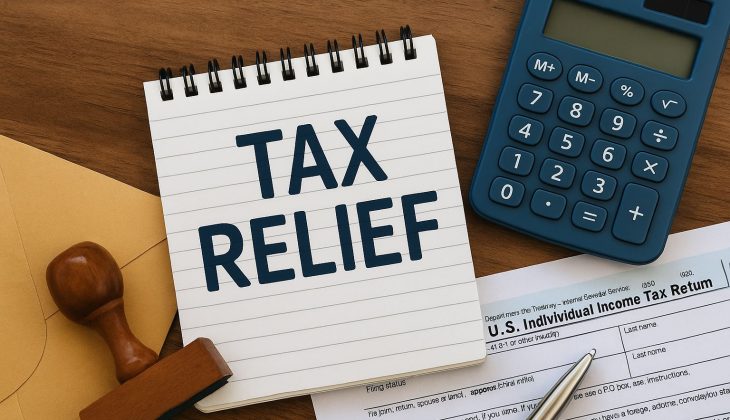
Thank you for sharing